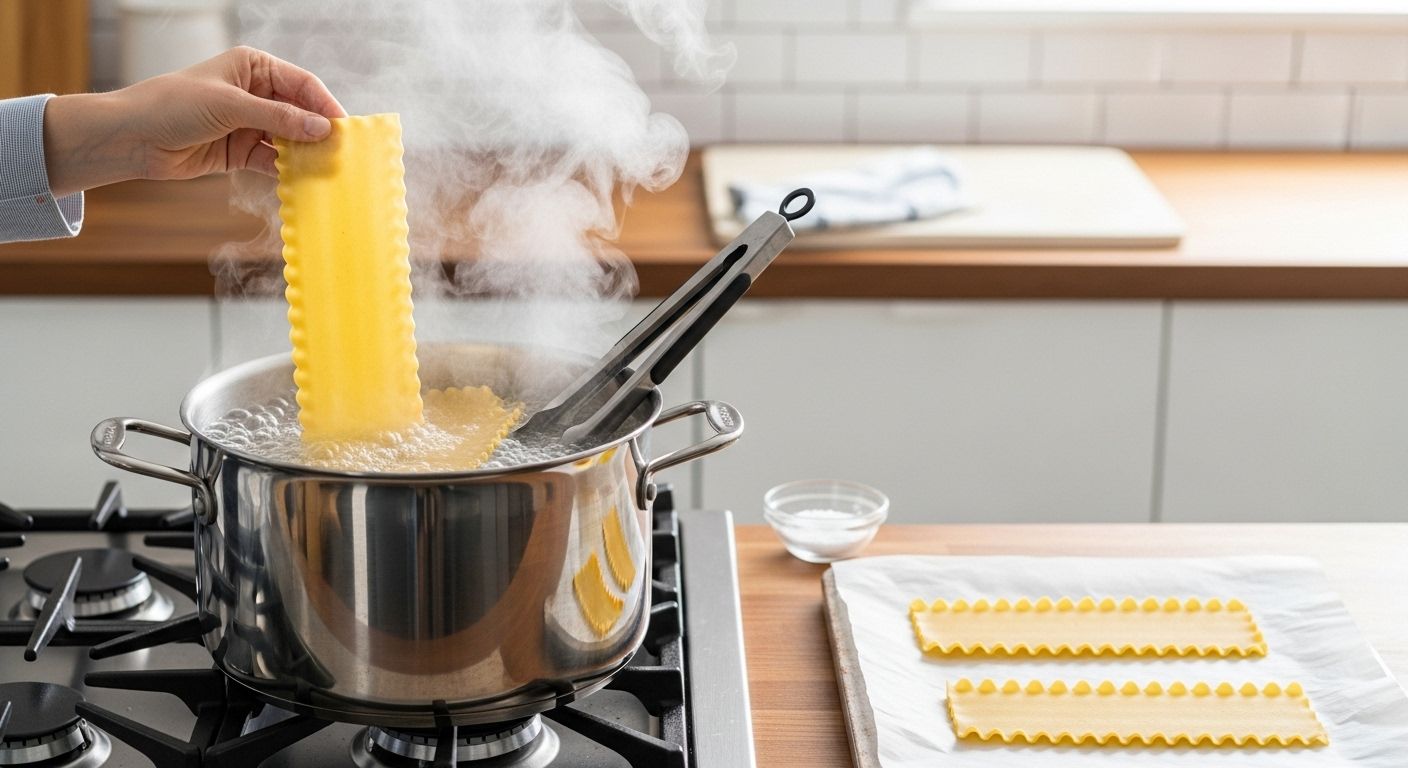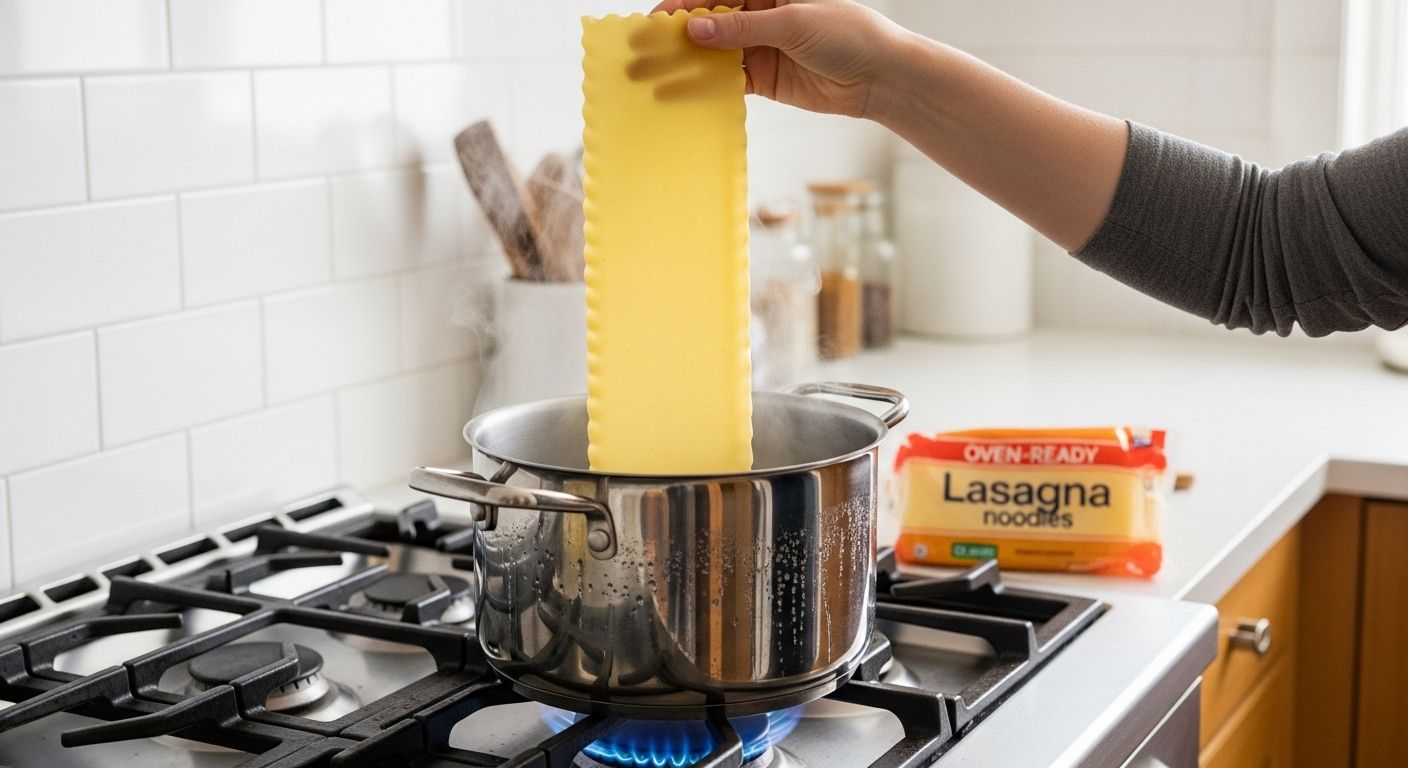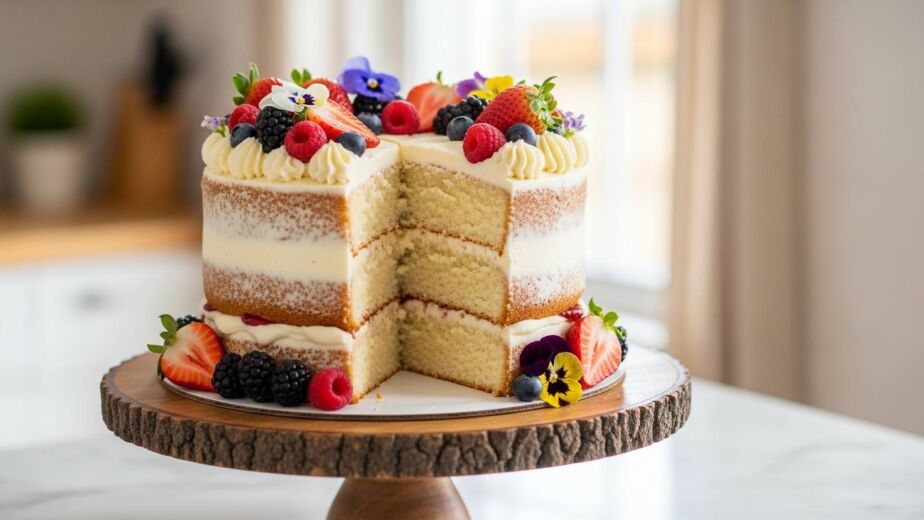Yes – you can boil oven-ready (no-boil) lasagna noodles, but in most cases it’s not necessary. These pasta sheets are partially pre-cooked and intended to bake directly in the lasagna dish by absorbing sauce and oven moisture. That means you can layer them straight from the box (with plenty of sauce) and skip boiling entirely. However, if you want extra-soft noodles or need to roll them up, a quick dip in boiling water is fine. Just be sure to keep the time short (around 2–3 minutes) and watch them closely so they don’t turn mushy.
Oven-ready (no-boil) lasagna noodles are dry pasta sheets made to cook in the oven. They’re sold as a time-saving shortcut: you layer them with sauce and cheese and bake, and they absorb the liquid as they cook. In other words, these noodles act like a giant sponge – the sauce does the work of cooking them. Because they’re partially pre-cooked, it’s perfectly safe to use them without boiling. Many chefs explain that you simply “layer the rigid sheets of oven-ready pasta [and] they will soften” in the baking process. In practice, you just need plenty of sauce or liquid so the noodles stay moist. One recipe author notes that oven-ready noodles are “great for recipes with a more watery sauce,” since the extra liquid ensures they don’t dry out while baking.
Why (and When) to Boil Them
There are a few good reasons you might choose to boil or soak oven-ready noodles before baking. For example: – Lasagna roll-ups or stuffed pasta: If you plan to make lasagna rolls or any dish where you need to bend or roll the noodles, a quick boil (or soak) makes the sheets pliable and easy to handle. Barilla, the pasta brand, specifically recommends boiling their no-boil lasagna sheets for about 3–5 minutes when making roll-ups so they become “more pliable”. As one cooking author explains, the sheets need to be soft enough to avoid cracking when you roll them.
– Extra-tender texture: A brief boil gives the noodles a very soft, delicate bite. One blogger points out that pre-cooking makes the pasta “delicately tender” and less likely to be chewy. If you or your family prefer melt-in-your-mouth noodles, a couple of minutes in boiling water can deliver that super-soft texture.
– Thick or dry sauces: Oven-ready noodles absorb moisture during baking. If your lasagna has a very thick sauce (or if you fear it might dry out), pre-boiling can help. The Matbakh blog notes that boiling prevents the noodles from soaking up too much sauce and drying out the dish when the sauce is thick. In other words, pre-boiling can act like giving the pasta a head start so it won’t steal all the moisture.
– Alternative recipes: Sometimes people use oven-ready lasagna noodles in dishes other than the classic baked lasagna (for example, layered pasta casseroles, soups, or pasta bakes). In those cases, you might treat them more like regular dried pasta and boil as needed.
Each of these reasons comes with a trade-off: boiling removes some of the noodle’s natural ability to absorb sauce, and if you boil too long, the sheets can turn mushy or tear. So if you boil, keep an eye on them and only cook for a minute or two until just pliable. Over-boiling no-boil noodles almost guarantees a soggy, falling-apart lasagna.
How to Boil Oven-Ready Lasagna Noodles

If you decide to boil (or “pre-soak”) your oven-ready lasagna sheets, follow these tips for best results: 1. Use a large pot of water: Fill a big pot with plenty of water (add a pinch of salt if you like). Bring it to a rolling boil. You don’t need oil since the noodles aren’t likely to stick together much in boiling water.
2. Add sheets one by one: Drop the dry lasagna sheets into the water one at a time. Don’t dump the whole box in together. Only do a few noodles (5–6) at a time so they can move freely. If you add too many, they will clump or tear apart.
3. Short boil time: Let the noodles simmer for about 1–2 minutes. You’re not trying to cook them fully – just soften them. The noodles should remain somewhat firm but bend easily. As The Matbakh advises, boil until the sheets are just pliable. Then remove them with tongs. They should still be a bit chewy; remember they will finish cooking in the oven.
4. Prevent sticking: After each noodle is done, lay it out flat on a sheet of parchment paper or a baking sheet. Don’t stack the hot sheets on top of each other – separate them with parchment if you’re doing more than one layer. This keeps them from fusing together.
5. Dry slightly: You can let the noodles air-dry for a couple of minutes to cool. (They will continue to absorb sauce in the oven, so no need to pat them super-dry.)
Once your sheets are boiled (or soaked), assembling the lasagna is just like normal. Start by spreading a cup of sauce on the bottom of your pan. Then lay your first layer of noodles on top, fitting them as needed. Spoon more sauce over the noodles, add cheese (ricotta, mozzarella, parmesan – your favorites), and repeat. Cover the pan tightly with foil for the first half of baking; this traps steam and gives the no-boil sheets extra moisture so they finish cooking perfectly. In the last 10–15 minutes, remove the foil so the top layer can brown and get bubbly.
If you don’t pre-boil at all, the same layering rules apply – just be sure to use generous amounts of sauce or even a bit of water in each layer. Many recipes call for at least ¼ to ½ cup of sauce under and between each pasta layer so the noodles hydrate fully during the bake. Covering with foil or a lid is especially important when using no-boil pasta, because it ensures the sheets stay moist.
Alternatives and Extra Tips
- Soaking instead of boiling: Some people prefer to simply soak oven-ready noodles in hot water for a few minutes rather than boil. Barilla, Ronzoni, and Prince (popular pasta brands) all suggest soaking no-boil lasagna sheets in warm water for about 10–15 minutes if making roll-ups. Even a shorter 3–5 minute soak in just-boiled water can soften them slightly without overcooking.
- No-boil shortcut: If you skip pre-boiling, the main “trick” is to use enough liquid. As one cooking source sums up: “the key to perfecting oven-ready lasagna pasta is ensuring extra sauce is used”. In practice, that means laying down sauce, then pasta, then more sauce on top, and repeating generously.
- Watch bake time: Oven-ready noodles often need a bit longer to bake than pre-boiled ones (because they start drier). Most recipes bake a lasagna (covered) for ~30–45 minutes at around 350–375°F, then uncovered for 10–15 more minutes. Always let the lasagna rest for 10–15 minutes after baking; this helps any remaining liquid absorb and the noodles set.
- Fresh or regular noodles: As a side note, remember that regular dried lasagna noodles (non no-boil) must be boiled fully before using, so the rules above wouldn’t apply. Homemade fresh pasta also cooks quickly (1–3 minutes in boiling water). Oven-ready noodles just save you that step – and save time in cleanup!
In summary, you can boil oven-ready lasagna noodles, but you usually don’t have to. If you like extra-soft noodles or are making rolls, go ahead and give them a quick 1–3 minute boil or warm soak. Otherwise, just layer them straight into a saucy lasagna and bake. Either way, you’ll end up with a cozy, cheesy dish like this – no cooking wonderland required.
Check our latest blog posts for more useful information today.



